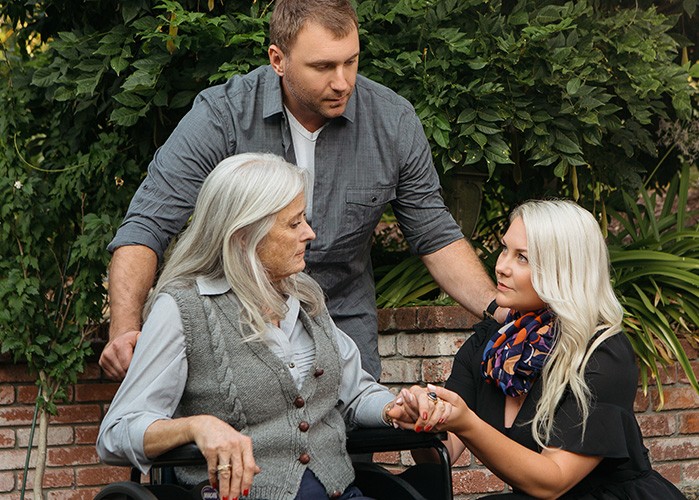Is It Worth Anything? Check the Web

Whether older adults are downsizing or just want to get start purging the belongings they have accumulated over a lifetime, many find themselves in a quandary: what to sell, what to give away and what to throw away. One factor in the decision is whether the goods have any value.
Are those delicate china teacups you inherited from your mother worth anything? What about that 1930s chair your aunt gave you? Or the Sandy Koufax baseball card that came with a pack of gum? How about your old Beatles vinyl albums?
Fortunately, the Internet now has many sites that will provide some idea of what your stuff is worth, if anything. People most commonly use eBay because it lists just about anything that’s sellable. More specific websites deal with antiques and collectibles, and other sites deal with only one category, such as jewelry, stamps or vinyl records.
An antique is defined as an item from an earlier era, which shows some degree of craftsmanship and is valued because of its age, rarity, condition or other unique features. A collectible is typically a manufactured item designed to be collected, such as a baseball card, although the lines often blur between the two classes.
Many items that have been in a family for generations (for example, an antique music box, pocket watch or wedding picture) may have sentimental value that is considerably higher than any other type of value.
Different Types of Value
When determining the worth of your item, you should be aware that items can be valued differently:
- Insurance value refers to the amount a person would receive (minus any deductible) should an insured item be destroyed, lost or stolen.
- Market value refers to what something is worth on the open market—that is, the price a buyer is willing to pay.
- Perceived value is what you believe something is worth. It is often associated with how much the buyer is willing to pay or the minimum the seller is willing to accept to part with an item.
- Sentimental value refers to the inherent worth something has to a person, which others may not recognize or appreciate.
For example, a sterling silver tea set circa 1930s might be appraised for insurance purposes at $10,000 to $15,000. However, because pewter and plated sliver are less expensive and more practical for younger generations, the market value for pre-owned sterling silver may only be 5-20 percent of its insured value.
The perceived value and market value of a dining room set are the same when a person buys the set from a furniture showroom, but once delivered to the customer, the market value is likely to drop 25-50 percent or more.
Many of these websites also offer a way to sell your item, or you can research the item online and then visit a local retail store, such as an antique or used book store, as an informed seller.
The Biggest: eBay
The largest and most general online source for prices is eBay. To quickly and easily find out what your item is selling for, go to “Advanced Search” (from About.com). Type in the name of your item, and where it says “Search Including,” click the “Completed Listings” button. Look for the green prices, “Sold,” which will give you an idea of what others have received by selling what you want to sell.
The listing also shows the name of the seller/dealer, so you can contact them to see if they want to buy or sell your item (at a commission).
Another source of information is eBay’s discussion forums under “Community.” On these category-specific boards you can find people who collect just about anything. Please note that to access this section of the site, you’ll need to sign up for eBay first.
One expert points out that quality is more important than quantity. Your collectible or antique’s condition can greatly influence the price it will bring. For example a 1962 Sandy Koufax baseball card was priced between $1 and $700, depending on the condition.
Antique and Collectible Sites
The Internet has many sites that offer information and prices for antiques and collectibles. Some offer free estimates, while others charge a fee. If you decide to use one of these sites to sell an item, there’s usually a cost. Here are a few popular antique and collectibles websites:
Lofty has more than 60 appraisers and experts who provide free evaluations of fine art, antiques, collectibles and jewelry, as well as a marketplace where people can buy and sell. Sellers pay a 10 percent fee, and Lofty handles all shipping arrangements.
Value My Stuff has a team of 68 former Sotheby’s and Christie’s experts who appraise items in over 48 collecting categories. Once you upload photographs and details of your item, Value My Stuff will email you a report detailing your item’s history and value.
Kovels has been a respected name in the antique and collectibles business for over 30 years. Its yearly price guide lists more than 900,000 real prices rather than estimates for antiques and collectibles sold in the United States, Canada and Europe. Each entry gives a description, price and year of sale.
Priceminer combines data from eBay, GoAntiques and the Internet Antique Shop to provide information that spans several years, in the form of graphs and charts, including average price, number of items included in the average, range of price from highest to lowest and a current estimate based on today’s market conditions.
Collectors Weekly encompasses many collectibles, including books, postcards, movies, musical instruments, clothes and games. The site links to eBay auctions, so if you type in the name of the record you might want to sell—say the Beatles’ Revolver, you would find out that the auction price is anywhere from $15 to $150.
Worth Point boasts that its “Worthopedia” has more than 200 million “sold for” prices with item details and images, plus a library of articles written by experts in different categories.
Specialty Sites
Almost anything you want to sell or at least find out the value of probably has its own website: vinyl records, bicycles, skis, baseball cards, dolls, books, even Beanie Babies. For example, Beckett lists more than 22 million sports memorabilia items from nearly 1,200 hobby shops and auctions worldwide, while the NumisMedia Fair Market Value Price Guide provides the value of rare coins.
If you want to get rid of your old computer or camera, Worth Monkey focuses on used electronics and more. It searches the Internet for the current asking and selling price of used goods, then provides the average low, middle and high price of the product and directs you to the site where you can find the highest and lowest average price.
Going Local
For some items, such as skis, golf clubs or bicycles, it makes more sense to try to sell locally. One collectibles expert advises that your local Craigslist, for example, can garner better prices than national websites. Selling locally targets nearby interests (alpine skis will sell better in Colorado than Florida, for example) and helps you avoid the cost and hassle of shipping large items.
If you live in a large metropolitan area, chances are good that there is a local retailer buying and selling your item. Brick-and-mortar resale shops often specialize in antique jewelry, coins, used sports equipment, books, antiques and records. Before starting your local shopping trip, do some online research so that you know your item’s low, medium and high pricing options.
You can also sell your things at the local flea market or have a garage sale. You’re not likely to get top dollar, but you’ll quickly get rid of lots of items without too much expense.
Getting Help
If you don’t have the time or energy to do all the research yourself, there are other options. Professional organizers will sometimes find or suggest places to sell your unwanted items. If you are moving, a move manager (see Don’t Make a Move Without Getting Help, July 2014 Senior Spirit) is often knowledgeable about venues to sell items. If you are making a large move or getting rid of someone’s estate, an estate sale can appraise the worth of the items and sell them. You’ll likely have to pay a large commission, but you won’t have to spend time figuring out details on your own.
You can also consign your items to an auction house, either online, locally or through a specialty house. Check its references, fees and the work required from you before deciding on the right auction. Or, hire an appraiser. To find an expert appraiser in your area, go to the American Society of Appraisers.
If you can’t or don’t want to deal with selling your belongings, donate them to a thrift shop that supports your charity of choice. Many organizations will pick up items and provide a receipt for a tax deduction.
And if getting rid of your valuables is too difficult and you decide you’ll just leave it to your family, you should check with them first. It might be that your heirs are not interested and may just take your treasured china to the nearest dumpster.
Sources“13 Ways to Sell Your Stuff!,” About Home“Antiques and Collectibles Appraisal” Appraise Your Own Junk“How Do I Know What My Stuff Is Worth?,” eBay“Identify What You Have and What’s it Worth,” About.com”What’s This Worth? ” Crawford DirectCopyright Charles Puchta
Reprinted by Always Best Care Senior Services with permission from Senior Spirit, the newsletter of the Society of Certified Senior Advisors The Certified Senior Advisor (CSA) program provides the advanced knowledge and practical tools to serve seniors at the highest level possible while providing recipients a powerful credential that increases their competitive advantage over other professionals. The CSA works closely with Always Best Care Senior Services to help ABC business owners understand how to build effective relationships with seniors based on a broad-based knowledge of the health, social and financial issues that are important to seniors, and the dynamics of how these factors work together in seniors’ lives. To be a Certified Senior Advisor (CSA) means one willingly accepts and vigilantly upholds the standards in the CSA Code of Professional Responsibility. These standards define the behavior that we owe to seniors, to ourselves, and to our fellow CSAs. The reputation built over the years by the hard work and high standards of CSAs flows to everyone who adds the designation to their name. For more information, visit www.society-csa.com
To print this article CLICK HERE





